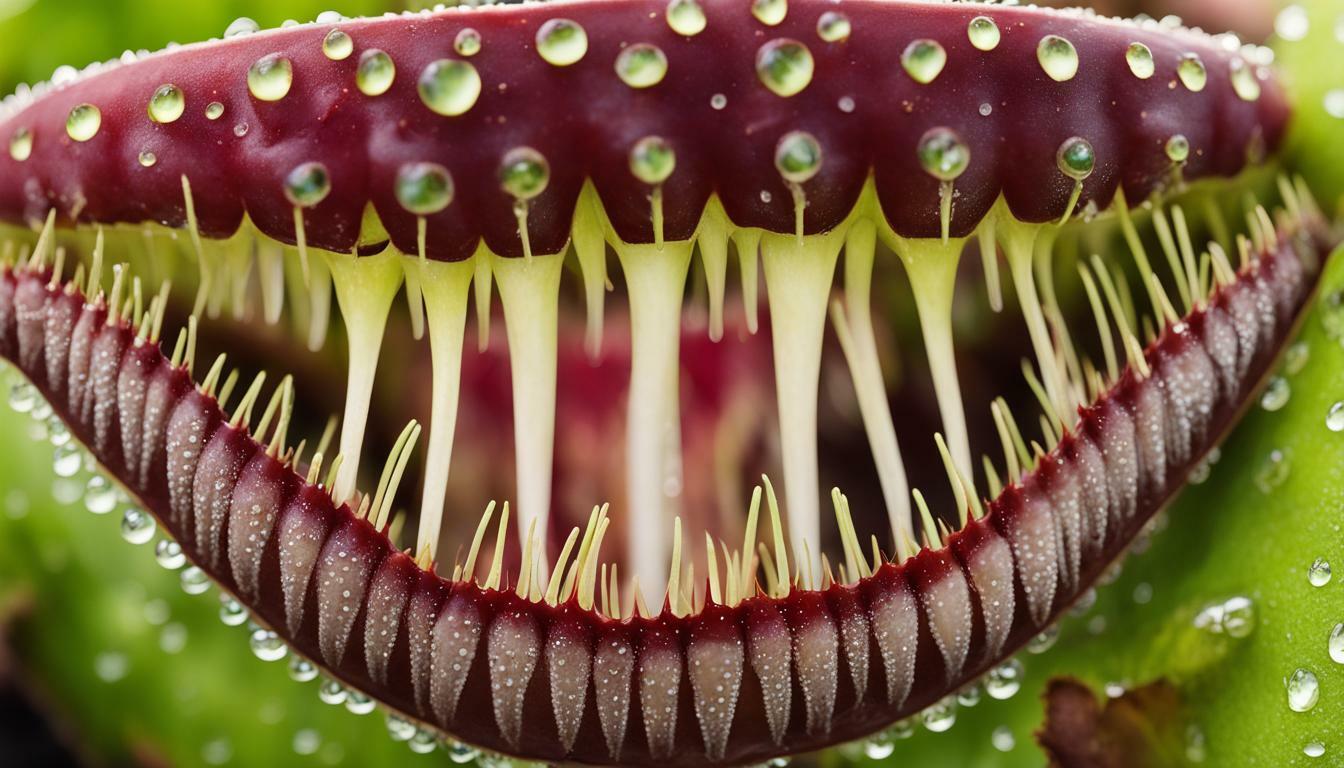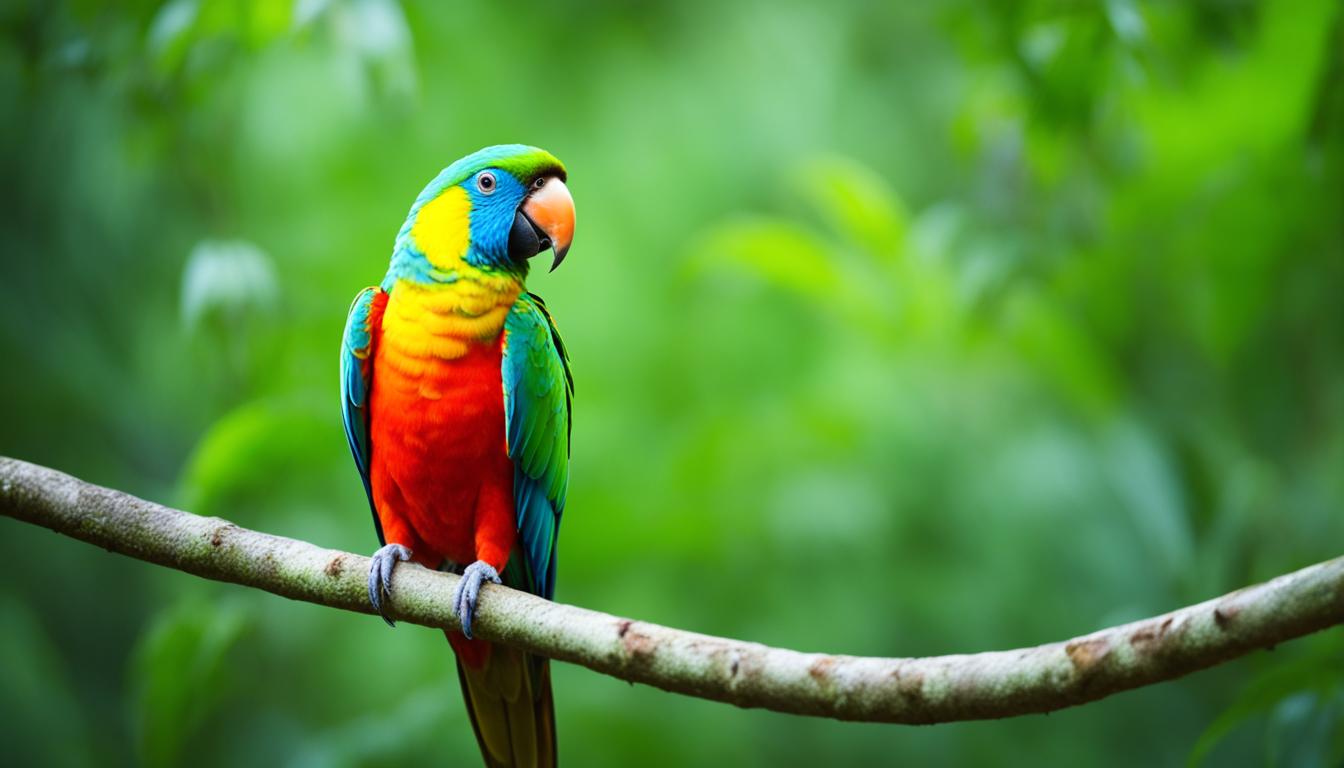Venus flytraps are fascinating carnivorous plants that are known for their ability to capture and consume insects. While they are harmless to humans, there is still a chance that you could get bitten by a Venus flytrap if you mishandle it or accidentally get your finger caught in its trap. If this happens, it’s essential to know what to do.
In this section, we will discuss the consequences, symptoms, treatment, and healing process associated with a Venus flytrap bite. We will also explain the importance of administering proper first aid and seeking medical attention if necessary.
Key Takeaways
- A Venus flytrap bite is generally harmless to humans.
- Symptoms of a bite may include redness, irritation, mild pain, and potentially an allergic reaction.
- It’s important to practice proper first aid, including washing the affected area, and seeking medical attention if severe symptoms arise.
- Most Venus flytrap bites will heal naturally over time, but it’s essential to keep the area clean and avoid further irritation.
Consequences of getting bitten by a Venus flytrap
While Venus flytrap bites are generally harmless to humans, they may cause some discomfort. You may experience immediate effects such as mild pain, redness, or irritation around the affected area. However, these symptoms typically subside within a few hours.
Long-term implications of a Venus flytrap bite are rare, but it is essential to monitor the affected area for any signs of infection. If you notice any persistent swelling, pus, fever, or other severe symptoms, seek medical attention immediately.
In general, the consequences of being bitten by a Venus flytrap are minimal. The plant’s digestive enzymes are not powerful enough to harm humans seriously. However, it is still crucial to practice proper first aid and seek medical attention if necessary.
Symptoms of Venus Flytrap Bite
If you have been bitten by a Venus flytrap, you may experience some mild symptoms. The affected area may become irritated and slightly red. You may also feel some mild pain or discomfort that usually subsides within a few hours. In some cases, the bite may cause slight swelling, but this is not common.
It is important to note that while Venus flytrap bites are generally harmless, some people may experience an allergic reaction. If you notice any symptoms beyond mild irritation after being bitten, such as difficulty breathing, hives or a rash, seek medical attention immediately.
The severity of symptoms may vary depending on the individual, and some people may not experience any symptoms at all after being bitten by a Venus flytrap.
If you believe you have been bitten by a Venus flytrap, monitor the affected area for any changes or signs of infection. Clean the area gently with mild soap and water and apply a clean bandage if needed. If you develop any severe symptoms or experience an allergic reaction, seek medical attention right away.
Treatment for Venus flytrap bite
If you find yourself bitten by a Venus flytrap plant, it’s important to practice proper first aid to prevent further irritation or infection. The good news is that Venus flytrap bites are generally harmless to humans. However, if you experience severe symptoms, seek medical attention immediately.
The first step in treating a Venus flytrap bite is to gently rinse the affected area with water. This can help remove any plant tissue or debris that may be causing irritation. If the bite is particularly painful or swollen, you can apply a cool compress to the affected area to help reduce inflammation.
If the bite has broken the skin or is bleeding, you should apply a clean bandage to the area to prevent further infection. Keep the area clean and avoid scratching or picking at the bite, as this can cause further irritation and delay the healing process.
If you experience any severe symptoms such as allergic reaction, persistent pain, or fever, it’s important to seek medical attention immediately. Your doctor can prescribe medication or provide more advanced treatment to help manage your symptoms and speed up the healing process.
Remember, the key to treating a Venus flytrap bite is to act quickly and practice proper first aid. With the right care, you can minimize discomfort and promote a speedy recovery.
Healing process after a Venus flytrap bite
After being bitten by a Venus flytrap, your body will begin the natural healing process. The affected area may be red or irritated and may cause mild pain. However, these symptoms should subside over time.
If you experience any severe symptoms such as intense pain or swelling, it is important to seek medical attention as soon as possible. You may be prescribed medication to alleviate these symptoms and prevent infection.
While your body heals, there are steps you can take to aid in the process. Keep the affected area clean and avoid touching or rubbing it. If necessary, apply a clean bandage to protect the area from further irritation.
It is also important to monitor the affected area for any signs of infection such as increased redness or drainage. If any of these symptoms occur, contact your healthcare provider immediately.
Overall, the healing process after a Venus flytrap bite is typically straightforward and should not cause significant long-term effects.
First aid for a Venus Flytrap bite
If you have been bitten by a Venus Flytrap, the following first aid steps should be taken:
- Gently rinse the affected area with water to remove any debris or dirt that may be present.
- If the bite site is bleeding, apply gentle pressure with a clean cloth or bandage until the bleeding stops.
- Apply a cold compress or ice pack wrapped in a cloth to the affected area to reduce pain and swelling. Do not apply ice directly to the skin as it may cause frostbite.
- Monitor the bite site for signs of infection, such as redness, warmth, or discharge. If you notice any of these symptoms, seek medical attention.
- Do not attempt to pry open the Venus Flytrap’s jaws, as this can cause further injury to the affected area.
- If the pain or swelling persists or worsens, seek medical attention.
Remember that while a Venus Flytrap bite is generally harmless to humans, it is important to take proper precautions and seek medical attention if necessary. By following these first aid steps, you can help to minimize any discomfort and promote a speedy recovery.
Conclusion
Getting bitten by a Venus flytrap is generally harmless, but it’s important to understand the consequences, symptoms, treatment, and healing process associated with it. If you experience any redness, irritation, or mild pain, make sure to practice proper first aid by gently washing the affected area. Seek medical attention if any severe symptoms arise, and monitor for signs of infection. Remember, the healing process may take time, so be patient and keep the affected area clean to avoid further irritation.
FAQ
Q: What happens if a Venus flytrap bites you?
A: If a Venus flytrap bites you, it is generally harmless. The plant’s jaws are not strong enough to cause any significant damage to human skin. You may experience some mild pain, redness, and swelling at the site of the bite, but these symptoms should subside on their own over time. It is important to practice proper first aid, such as gently rinsing the affected area with water, and seek medical attention if any severe symptoms arise.
Q: What are the consequences of getting bitten by a Venus flytrap?
A: The consequences of being bitten by a Venus flytrap are generally minimal. While the plant’s jaws can cause some discomfort, there are typically no long-term implications or serious effects associated with a bite. It is important to keep in mind that Venus flytrap bites are not venomous and do not pose a significant threat to human health.
Q: What are the symptoms of a Venus flytrap bite?
A: Symptoms of a Venus flytrap bite may include redness, irritation, and mild pain at the site of the bite. Some individuals may also experience a slight swelling of the affected area. In rare cases, allergic reactions may occur, which can lead to more severe symptoms such as difficulty breathing or hives. If you experience any of these severe symptoms, it is important to seek medical attention immediately.
Q: What is the treatment for a Venus flytrap bite?
A: The treatment for a Venus flytrap bite involves practicing proper first aid. Begin by gently rinsing the affected area with water to clean it. If necessary, apply a clean bandage to protect the bite. Monitor the area for any signs of infection, such as increased redness, swelling, or pus. If severe symptoms occur or the bite shows signs of infection, seek medical attention promptly.
Q: What is the healing process after a Venus flytrap bite?
A: After being bitten by a Venus flytrap, the natural healing process will begin. The affected area may gradually improve over time, with any redness, swelling, or irritation subsiding. It is important to keep the area clean and avoid further irritation to aid in the healing process. If you have any concerns about the healing process or if the symptoms worsen, consult a healthcare professional.
Q: What is the first aid for a Venus flytrap bite?
A: When administering first aid for a Venus flytrap bite, start by gently rinsing the affected area with water to clean it. If necessary, apply a clean bandage to protect the bite from further irritation. Monitor the area for any signs of infection, such as increased redness, swelling, or pus. If severe symptoms occur or the bite shows signs of infection, seek medical attention promptly.











